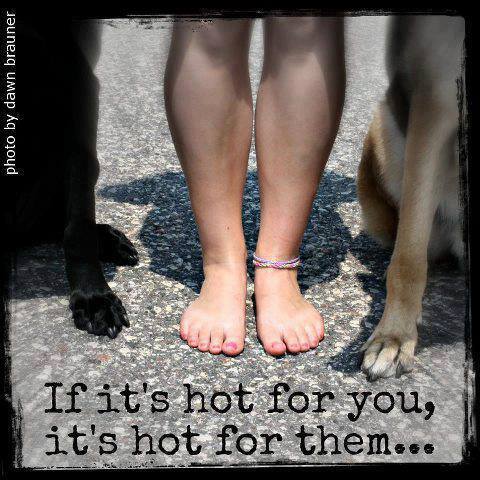We like to believe this applies when we take our clients out for a dog walk or run. In reality though, panting has very little to do with a dog’s happiness.The main reason dogs pant is to regulate their body temperature. Humans are able to sweat to cool off due to our skin’s large surface area and lack of hair, and because…
[Non-geeks, set your faces to “stun” in 3…2…1…]
…A gaseous substance has more entropy (heat) than its equivalent in liquid form. The conversion (evaporation) of liquid sweat to a gas is an endothermic process, meaning heat input is required. This heat comes from our bodies, leaving us a little cooler after the sweat has evaporated. That is why sweating cools us down. It literally transfers heat from our bodies to the surrounding air upon evaporation. If you’re still reading, you probably aced Chemistry 101. Way to go, Poindexter. I was the kid sitting in the back of the classroom typing dirty words into my calculator.

Anyhoot, the only sweat glands on a dog’s body are on their paws, and there are very few of them. Because their bodies are covered in fur, sweating would be a pretty inefficient way to cool off (which is probably for the best now that I think about it. Can you imagine what dog B.O. would smell like?? Gnarly.) So dogs cool themselves by rapidly expelling the hot air over their already wet tongue, which becomes enlarged to provide more surface area for evaporation. With each breath, dogs also draw in the cooler surrounding air. Voila. Panting.
Now that you know all about dog physiology, here is my checklist to make sure your dogs stay safe and comfortable this summer.
- Don’t Leave Your Dog in the Car. Ever. Seriously. EVER! Even with all the windows cracked on a temperate 75°F day, the temperature in a car can reach 120°F! Every year, there are hundreds of reports of people cooking their dogs by leaving them in their car. Please, leave your dog at home, or keep your dog with you. Don’t cook your dog!
- Check for hot pavement. We humans often don’t notice how hot pavement can get in the sun, because we wear shoes all the time. While dogs’ feet are a bit more robust than ours, hot pavement and metal (like a boat dock or truck bed) are still really dangerous. Some signs that your dog has burned paws are:
- Refusing to walk
- Limping
- Licking or chewing their feet
- Pads turn a darker color
- Redness, bleeding, or blisters
Please be mindful of hot surfaces, and walk your dog in the shade or in the grass. You can also lay down a wet towel for your dog if you’re loading your car and there is no grassy place for them to stand. To remove all doubt, press the palm of your hand against the surface of the pavement. If it is too hot for your hand, it is too hot for your dog’s feet!

- Know the Signs of Heat Exhaustion in dogs. Mild symptoms include restlessness, increased respiratory rate, excess salivation, vomiting or diarrhea. As the dog’s body temperature increases, the symptoms become more severe, and can include, weakness, staggering, gasping, color of gums becomes red, purple, or blue, seizures, and even death. If your dog has any of these symptoms, it might be too hot. If you notice any of these severe symptoms, take immediate action by calling your vet.
- To prevent heat exhaustion in your dog, place cool, wet towels over your dog’s fur, or tie a wet bandana around your dog’s neck when taking them for a dog walk or to the dog park. Consider taking your dog out in the morning or evening, avoiding the peak sun hours. Give them plenty of cool water to drink. Which leaves me to my next point:
- Keep your dog hydrated! Make sure the water bowl is filled with fresh cool water! Since dogs can’t sweat, they cool themselves internally by drinking water that is cooler than their elevated body temperature.
Follow these tips to keep your dogs safe and happy in the heat. For cute pictures of dogs enjoying the San Diego Summer, check out @doggiejoggie on Instagram. You can also follow @doggiejoggie on Twitter for more useful tips and tricks.
If you have any other summer safety tips for dogs, or know any dirty words I can make with my calculator, please leave a comment. Stay cool!